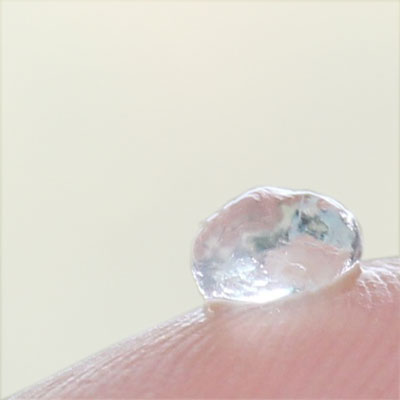Contact: Gary Chinga Carrasco
Bio-compatible cellulose nanostructures for advanced wound healing applications
This multi-disciplinary research programme will develop novel material solutions for use in advanced wound healing based on nanofibrillated cellulose structures. This proposal requires knowledge on the effective production and application of sustainable and innovative micro- and nanofibres based on cellulose. The project will assess the ability of these nanofibres to interact with complementary polymers to form novel material structures with optimised adhesion and moulding properties, absorbance, porosity and mechanical performance. The NanoHeal proposal brings together leading scientists in the fields of nanocellulose technology, polymer chemistry, printing and nanomedicine, to produce biocompatible and biodegradable natural polymers that can be functionalized for clinical applications.
As a prototype model, the project will develop materials for use in wound healing.
However, the envisaged technologies of synthesis and functionalization will have a diversity of commercial and industrial applications.
Dissemination:
Book chapters:
Three-dimensional visualization and quantification of structural fibres for biomedical applications. Invited book chapter contribution, in: “Confocal Laser Microscopy”, ISBN 980-953-307-966-5.
Published articles in Web of science (ISI) :
Ultrapure Wood Nanocellulose—Assessments of Coagulation and Initial Inflammation Potential. ACS Appl. Bio Mater.
Mechanical characteristics of nanocellulose-PEG bionanocomposite wound dressings in wet conditions. J. Mechanical Behavior of Biomedical Materials 69, 377 – 384.
The Interaction of Wood Nanocellulose Dressings and the Wound Pathogen P. aeruginosa. Carbohydrate Polymers 157, 1955 – 1962.
Producing Ultrapure Wood Cellulose Nanofibrils and Evaluating the Cytotoxicity Using Human Skin Cells. Carbohydrate polymers 137: 191 – 197. http://dx.doi.org/10.1016/j.carbpol.2015.10.024.
Translucent and ductile nanocellulose-PEG bionanocomposites – a novel substrate with potential to be functionalized by printing for wound dressing applications. Industrial Crops and Products doi:10.1016/j.indcrop.2016.02.024. Invited, special issue on Nanocellulose.
An investigation of Pseudomonas aeruginosa biofilm growth on novel nanocellulose fiber dressings. Carbohydrate polymers 137: 191-197, http://dx.doi.org/10.1016/j.carbpol.2015.10.024
Characterisation of interactions between a novel nanocellulose wound dressing and the wound pathogens Staphylococcus aureus and Pseudomonas aeruginosa. Wound repair and regeneration 23(4): A13-A13
Controlling the Elastic Modulus of Cellulose Nanofibril Hydrogels – scaffolds with potential in tissue engineering. Cellulose DOI 10.1007/s10570-014-0470-5 – open access
3D bioprinting of carboxymethylated-periodate oxidized nanocellulose constructs for wound dressing applications. BioMed Research International, ID 925757 – open access.
Pretreatment-dependent surface chemistry of wood nanocellulose for pH-sensitive hydrogels. J. Biomaterials Applications, 2014, DOI: 10.1177/0885328214531511.
Management of wound infections with dressing manufactured from nanocellulose fibers derived from Pinus radiata wood pulp. Wound repair and regeneration, 2013, 21(6): A79-A79.
International cooperation
Hemicellulose-reinforced nanocellulose hydrogels for wound healing application. Cellulose doi:10.1007/s10570-016-1038-3
On the morphology of cellulose nanofibrils obtained by TEMPO-mediated oxidation and mechanical treatment. Micron, http://dx.doi.org/10.1016/j.micron.2015.02.003
Three-Dimensional Microstructural Properties of Nanofibrillated Cellulose Films. Int. J. Mol. Sci. 2014, 15(4), 6423-6440.
“The effect of residual fibres on the micro-topography of cellulose nanopaper“. Micron, 2014, 56: 80-84.
NanoHeal in electronic media
160515: Is wood nanocellulose a good option for biomedical use?. Atlas of Science.
141004: Surface-Modified Nanocellulose Hydrogels for Wound Dressing. RegenerativeMedicine.net
140414: “Preparing nanocellulose for eventual use in dressings for wounds”. frogheart.ca
140410: “Surface-modified nanocellulose hydrogels for wound dressing”. NanoWerk
140116: “Nanocellulose-based wound dressings”. Focus on, PFI.
130527: The Science Museum, London.
120828: “Research project funded for wound healing using nanocellulose”. BioBasedDigest.
120823: “Bio-compatible cellulose nanostructures for advanced wound healing applications”. Nanowerk.
Invited contributions
170202: Wood nanocellulose – a natural component for novel biocomposite wound dressings. Innovations in wound healing and wound management. 31st Jan – 2nd Feb 2017. Invited.
160905: Cellulose fibres and nanocellulose – components for FDM filaments and hydrogels for 3D printing. IX Iberoamerican Congress on Pulp and Paper Research Under the theme “Building bridges in research and innovation for the sustainable bioeconomy”. September 4-8, Espoo, Finland. Invited.
150427: Nanocellulose-based biocomposites for wound healing applications. International Conference on Natural Fibres. 29-27 April 2015.
150310: Micro- and nanofibres from wood pulp – new industrial perspectives. ImagineNano, 10-13 March 2015.
141126: Advanced biomaterials based on nanofibrillated cellulose – from nanopapers to nanomedicine. VIII Iberoamerican congress on pulp and paper research. 26-28 November, 2014, Medellin, Colombia. Invited Keynote.
140120: Nanocellulose from wood as a biomaterial for biomedical applications. Invited talk, ISN2A – Int. symposium on nanoparticles/nanomaterials and applications, 20-22, Lisbon, Portugal.
Conferences/Seminars/Workshops
151021: Characterisation of interactions between a novel nanocellulose wound dressing and the wound pathogens Staphylococcus aureus and Pseudomonas aeruginosa. European Tissue Repair Society (ETRS) Annual Congress, 21-23 October. Copenhagen, Denmark
151019: Investigation of Effect of Poly Ethylene Glycol as a Plasticizer for the Manufacture of Nanocellulose Films. EPNOE – International polysaccharide conference. 19-22 October. Wasaw, Poland.
150408: TEMPO-pretreated wood nanocellulose for wound dressings. BioNanoMed Conference- Nanomaterials for Biomedical Applications, 08-10 April, Krems, Austria.
141028: Wood nanocellulose – assessment of toxicity and effects on activation of the complement and coagulation pathways using a whole blood model. Recent advances in cellulose nanotechnology research. 28-29 October, 2014. Trondheim.
141028: Examination of Pseudomonas aeruginosa biofilm growth on novel wound dressings manufactured from wood nanocellulose. Recent advances in cellulose nanotechnology research. 28-29 October, 2014. Trondheim.
141028: Nanocellulose as a biomaterial – Characteristics and potential bio-applications. Recent advances in cellulose nanotechnology research. 28-29 October, 2014. Trondheim.
140911: Wood nanocellulose – Characterization and potential application as barrier against wound bacteria. 18th International Microscopy Congress – Materials for medicine and biomaterials, 7-12 September 2014, Prague, Czech Republic.
140910: Comparison of Pseudomonas aeruginosa biofilm growth on nanocellulose fibre structures derived from softwood pulp and a commercial hydrofiber wound dressing. ETRS Annual Congress, 10th-12th September, Edinburg, UK.
140907: Studies on the 3D Printing of Nanocellulose Structures. 41st International IARIGAI Conference, 7th-10th September 2014, Swansea, UK.
140326: Immunogenic properties of TEMPO-treated wood nanocellulose. BioNanoMed Conference- Nanomaterials for Biomedical Applications, March 26 – 28, Krems, Austria.
131023: Biocompatibility of nanocellulose. Innventia days, 22-23 October, Stockholm, Sweden.
131023: Towards the management of wound infections with dressings manufactured from nanocellulose derived from Pinus radiata wood pulp. 23rd European Tissue Repair Society Meeting. Stem cells and regenerative medicine. 23-25 October. Reims, France.
131021: Controlling the elastic modulus of nano-engineered hydrogels by crosslinking cellulose nanofibrils. EPNOE 2013: “Polysaccharides and polysaccharide-derived products, from basic science to applications. 21st -24th October. Nice, France.
130313: Designing nanocellulose qualities for wound dressings. BioNanoMed2013. 4th international congress, Nanotechnology, Medicince, Biology. 14-15 March, Krems, Austria.
121204: “The potential of cellulose nanofibrils from wood pulp fibers as a substrate for wound healing applications”. Workshop. Understanding wood cell wall structure, biopolymer interaction and composition: implications for current products and new material innovation. Stockholm, Sweeden.
121121: “Potential cellulose-based materials for wound healing applications”. Treforedlingsforum, Oslo, Norway.

R&D partners:
The project is funded by the Research Council of Norway/NANO2021 (grant no. 219733), and is a cooperation between several leading R&D partners. PFI, NTNU Faculty of medicine, Cardiff University, Swansea University, Lund University, AlgiPharma.
